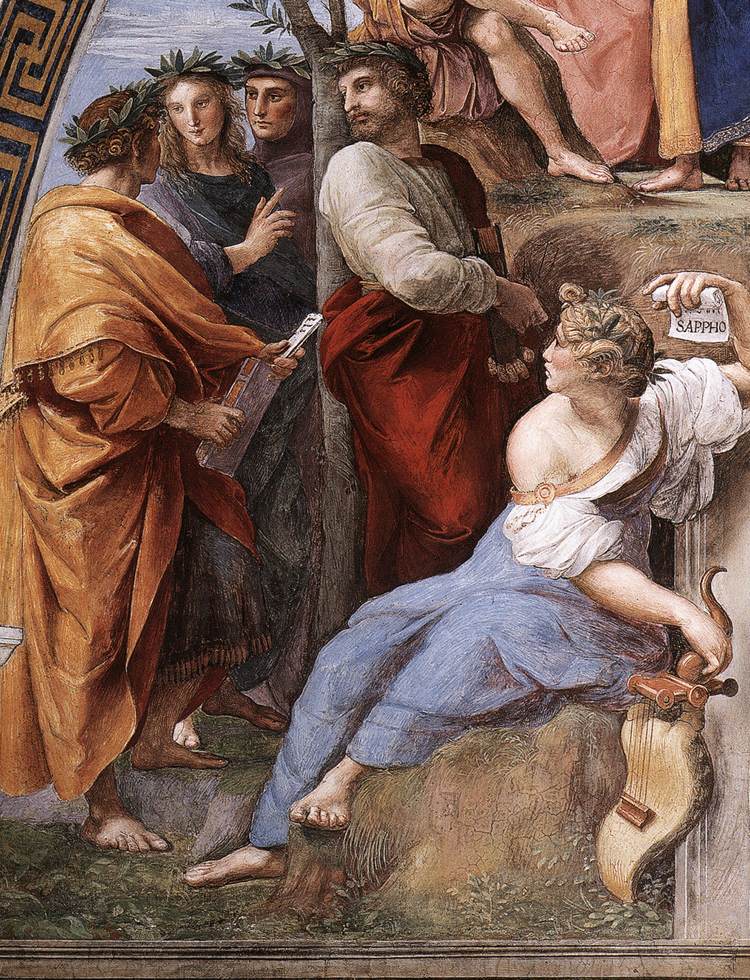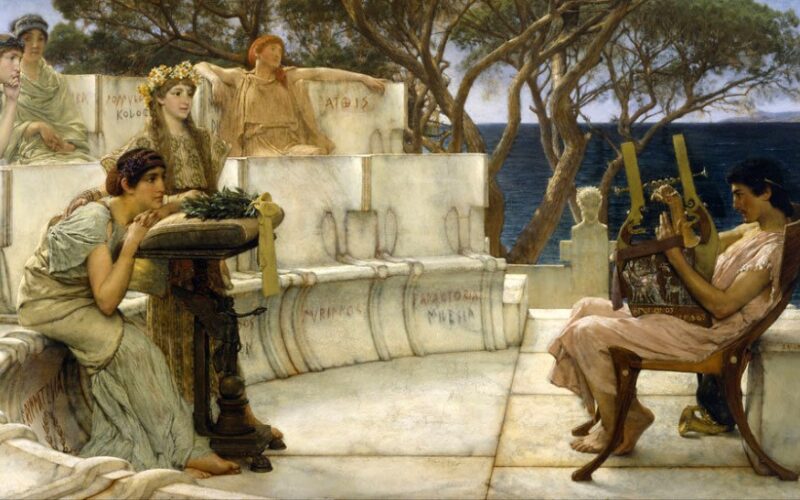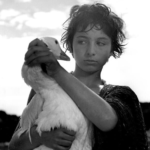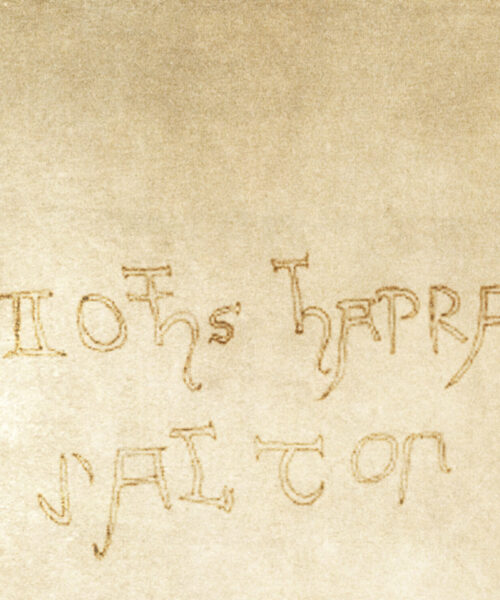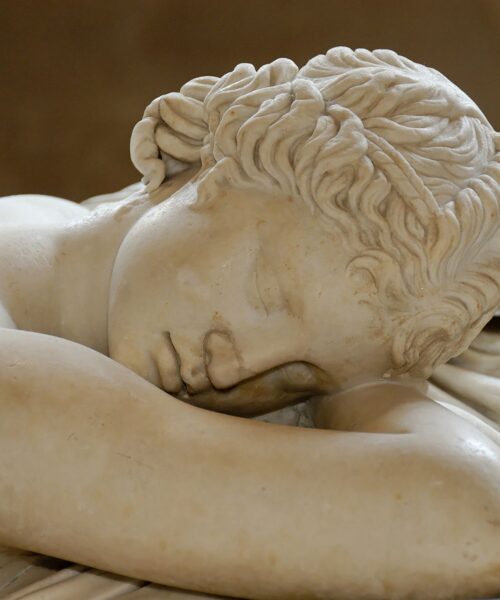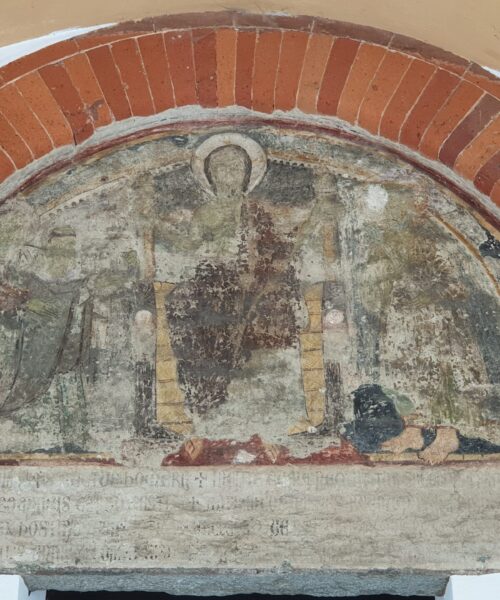The figure of Sappho, hailing from the island of Lesbos and living in the second half of the 7th century BC, emerges in history as the first great poetess of the ancient Western world. Her figure has assumed an almost mythical dimension, while maintaining a contemporary resonance, as her work, immersed in a universal language, transcends temporal barriers.
Immersed in the cult of Aphrodite, Sappho headed a thiasos, a religious association in Ancient Greece dedicated to the worship of a deity. In this context, young girls from distinguished families were entrusted to her for an education that prepared them for marriage. The teaching in the thiasos ranged from poetry to singing, from dance to the refinement of behavior, culminating in the pursuit of beauty and education in love in all its forms.
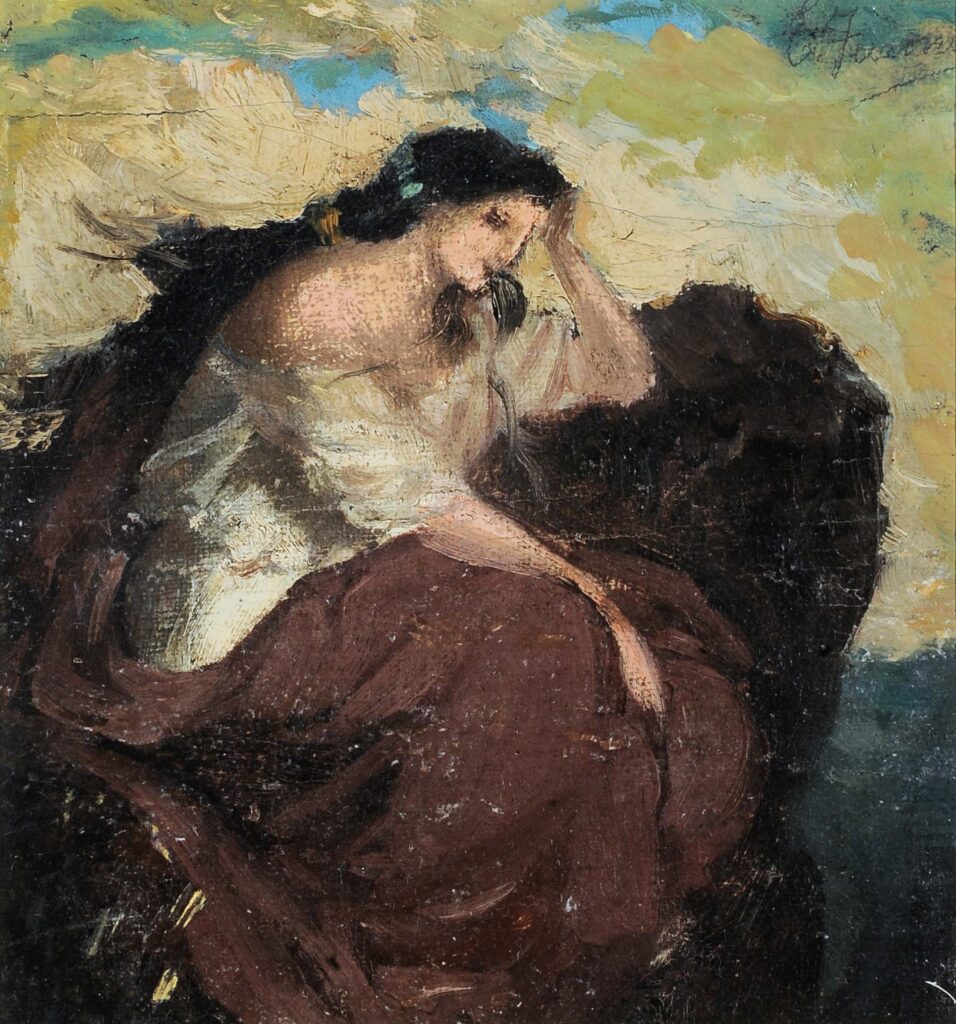
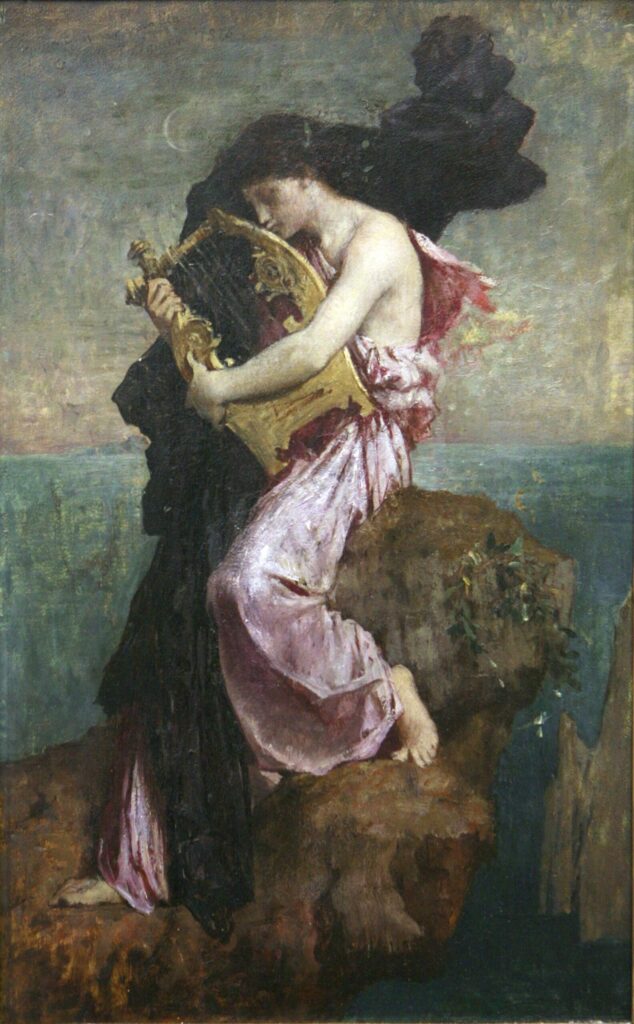
Historical sources suggest that within this exclusively female environment, intimate and sensuous bonds developed, both among the disciples themselves and between them and Sappho. It should be noted that, in that period, homosexual relationships were seen as a preparatory stage to heterosexual love, destined to culminate in marriage, an idea widely reflected in the literature and art of the time, as evidenced by wall decorations and contemporary pottery.
The date of Sappho’s death is unknown, but a legend has developed around it, also taken up by Leopardi in his “Ultimo canto di Saffo” (The Last Song of Sappho). According to the myth, after being rejected by Phaon, the man she loved, Sappho is said to have committed suicide by throwing herself from the cliff of Leucadia.
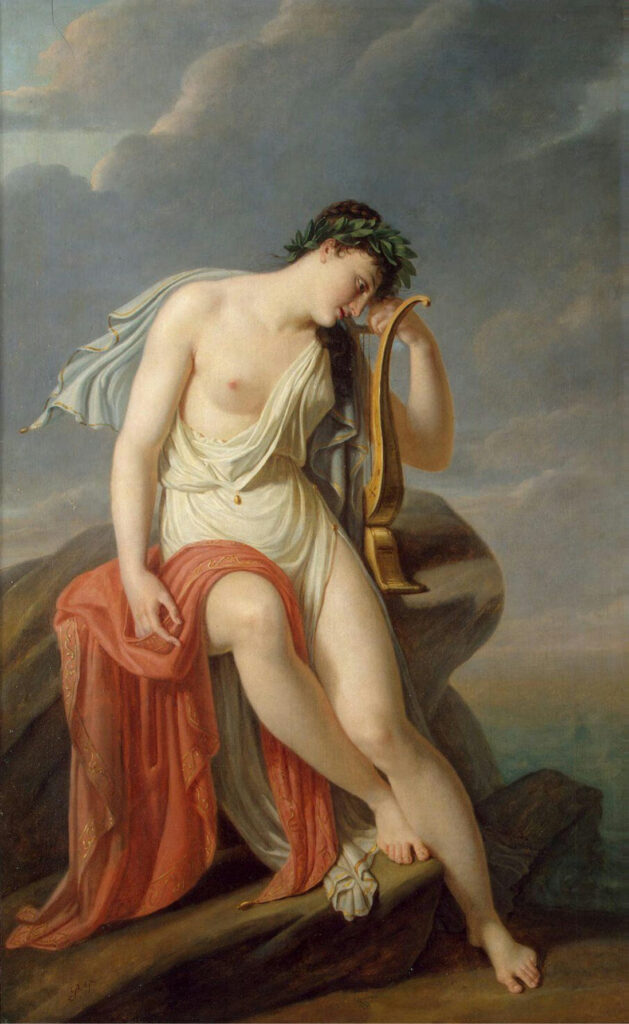
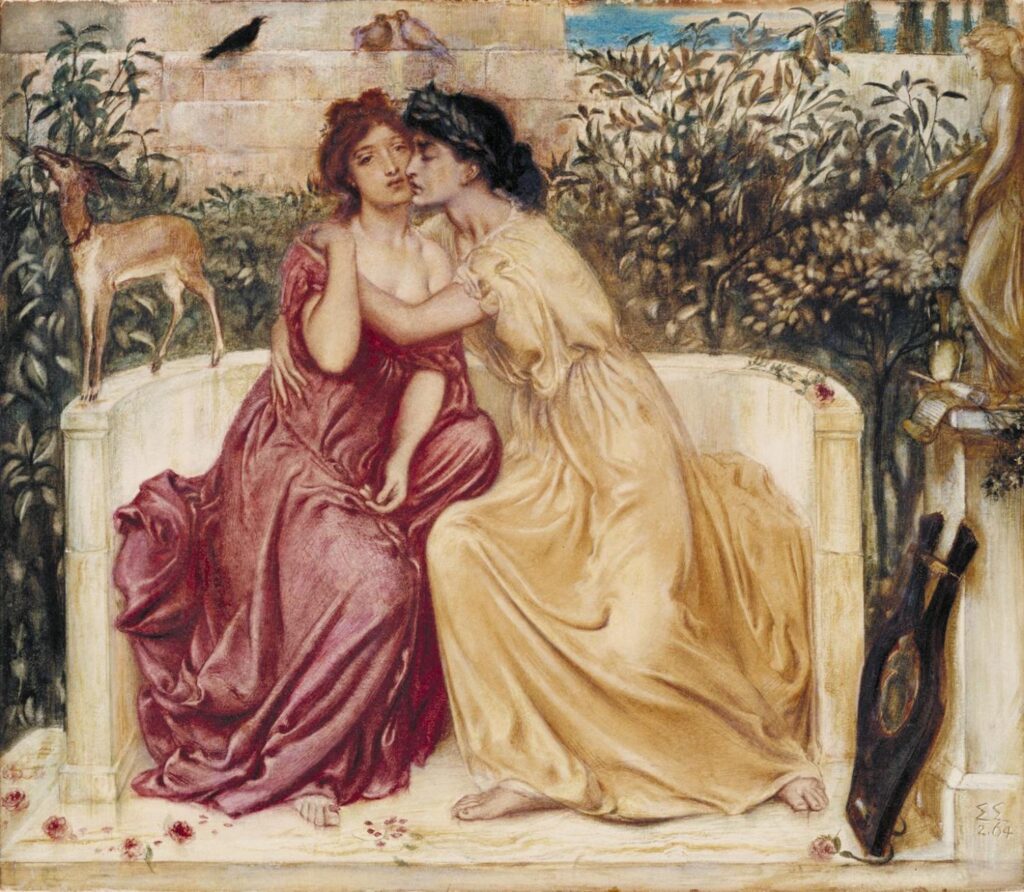
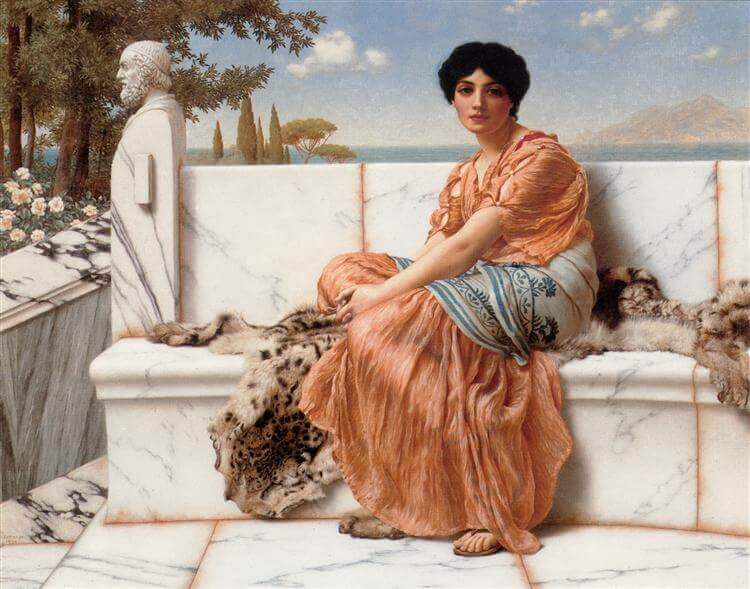
Phaon, the key figure of this tale, was an elderly boatman who, after an act of kindness towards an old woman – actually Aphrodite in disguise – received a gift of an ointment that made him young and beautiful. This change aroused the love of all the girls of Lesbos, including Sappho, who was soon neglected by Phaon in favor of another young woman.
The story of Sappho and Phaon has been reinterpreted in various artistic forms, including the comedy “Sappho and Phaon” by John Lyly, dated 1584 and set in Syracuse. In this work, Venus, the Roman equivalent of the Greek Aphrodite, arrives in Syracuse to humiliate Sappho, then the queen of the city. Venus gives Phaon such beauty that all the court ladies, including Sappho, fall in love with him. The love between Sappho and Phaon seems mutual, until an incident causes Venus to fall in love with Phaon. The comedy concludes with the young boatman leaving Sicily, while Cupid, having fallen in love with Sappho, adopts her as his new mother.
The myth of Sappho has inspired numerous artists, who have interpreted her figure through the lenses of their time, thus enriching the cultural heritage linked to this poetess, whose allure seems destined to endure over time.
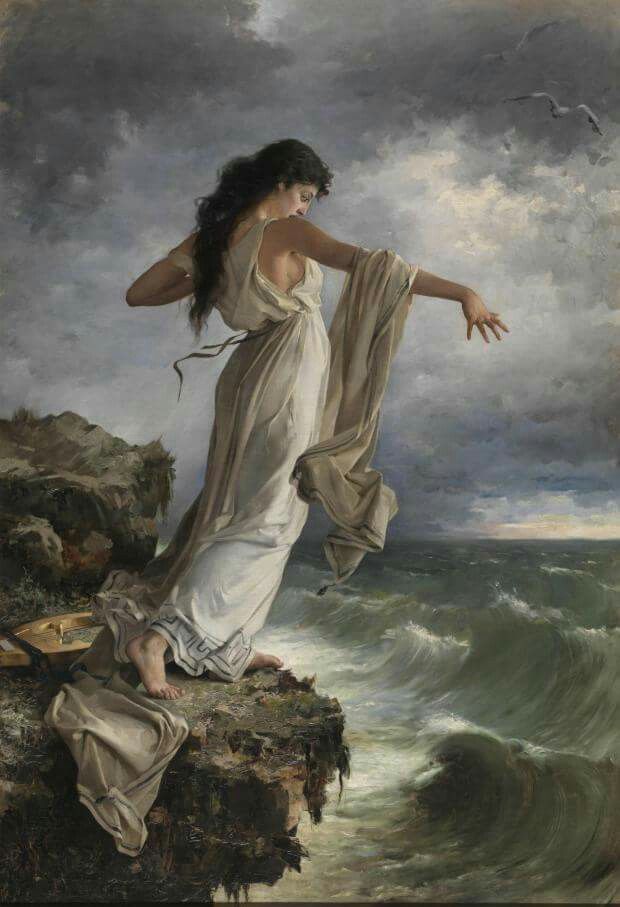
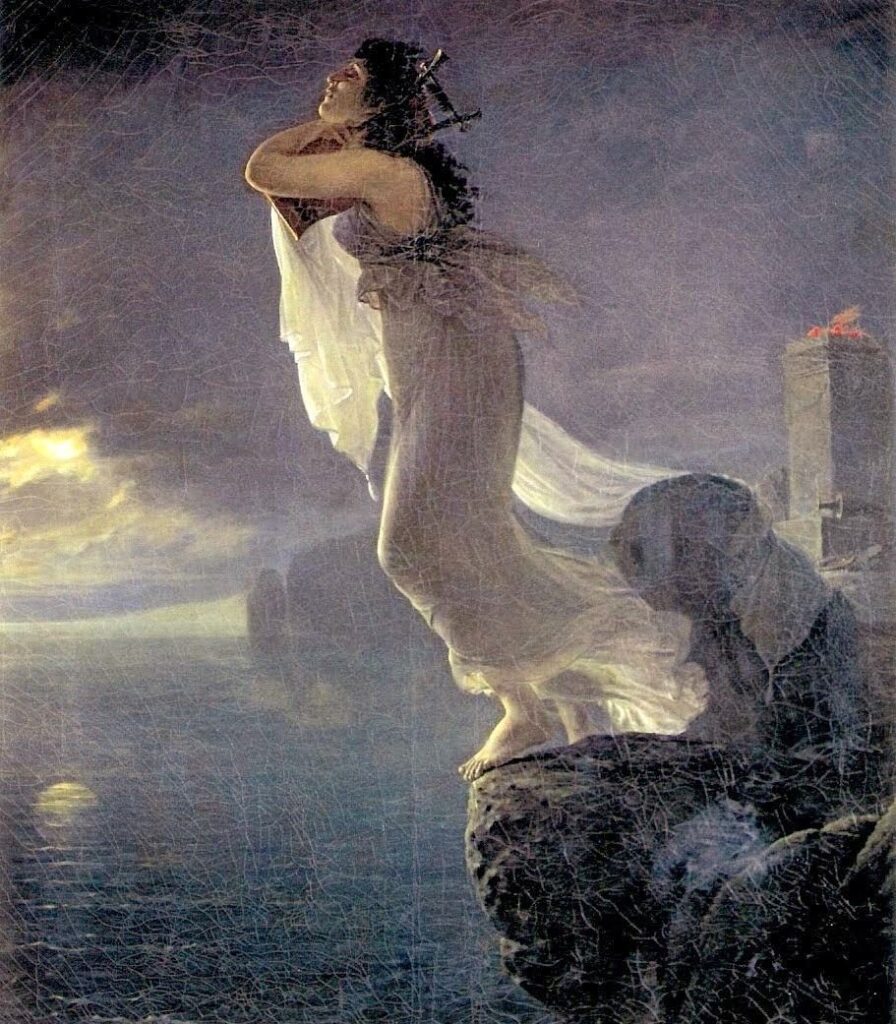
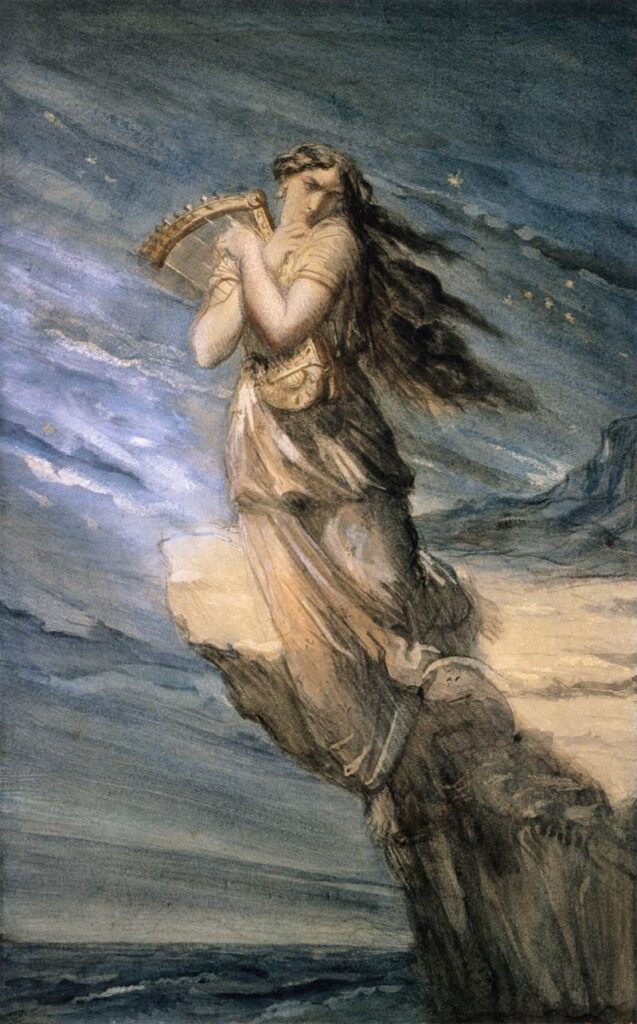
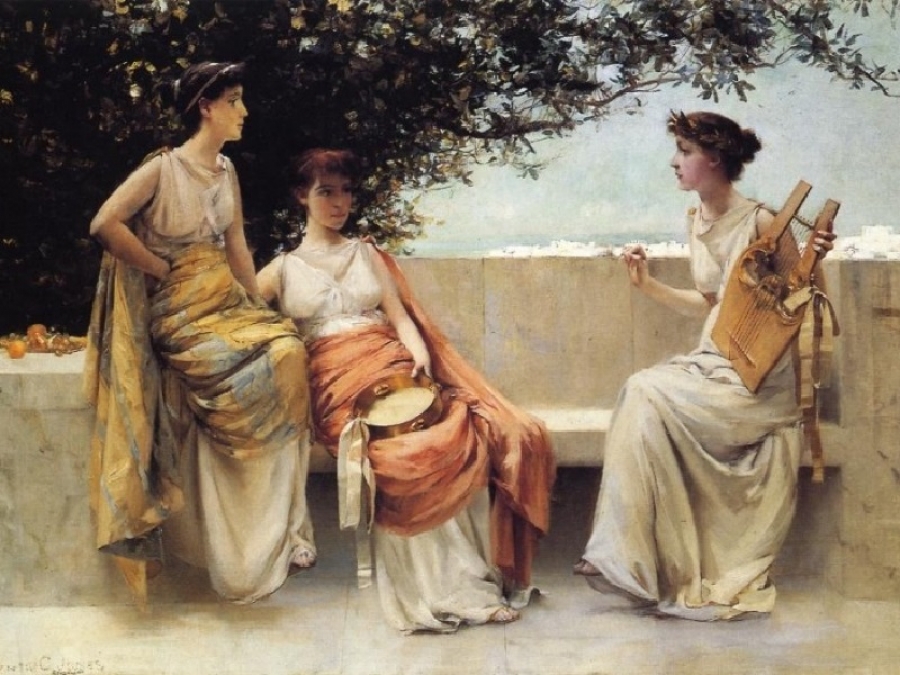
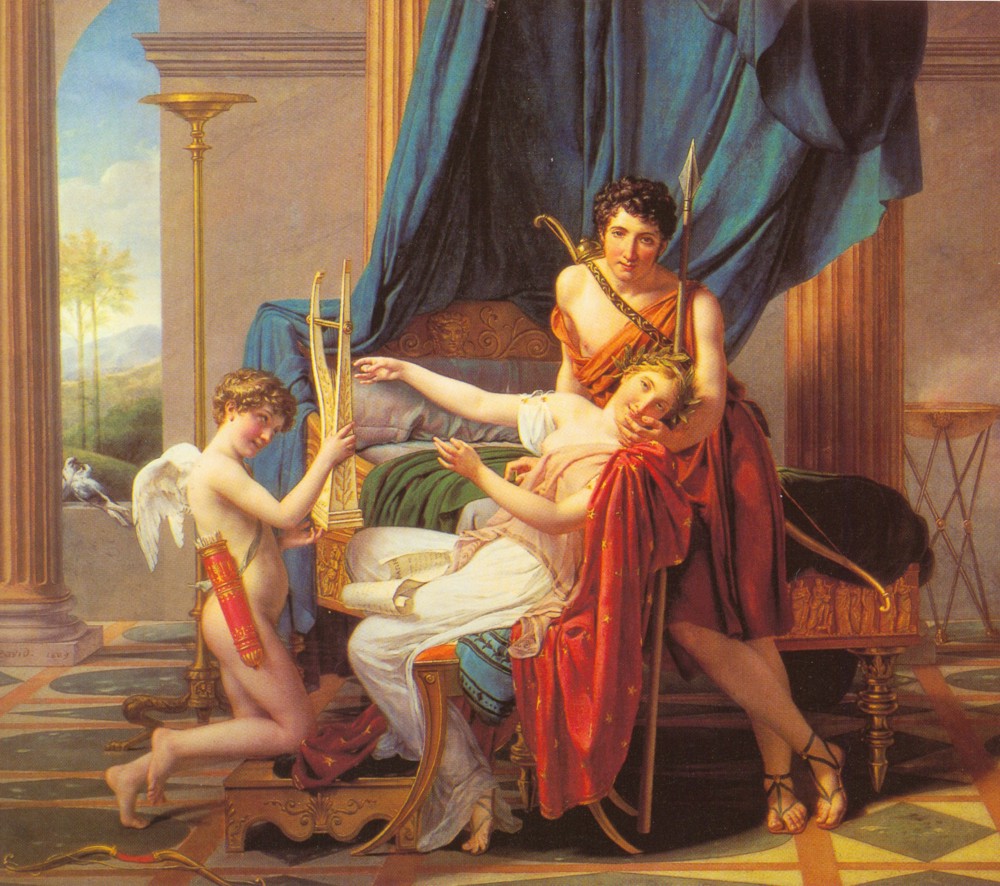
Let’s conclude with a poem by Sappho, translated by Salvatore Quasimodo, that captures the essence of her poetic spirit:
Tramontata è la luna
e le Pleiadi a mezzo della notte;
anche giovinezza già dilegua,
e ora nel mio letto resto sola.
Scuote l’anima mia Eros,
come vento sul monte
che irrompe entro le querce,
e scioglie le membra e le agita,
dolce amara indomabile belva.
Ma a me non ape, non miele;
e soffro e desidero.
